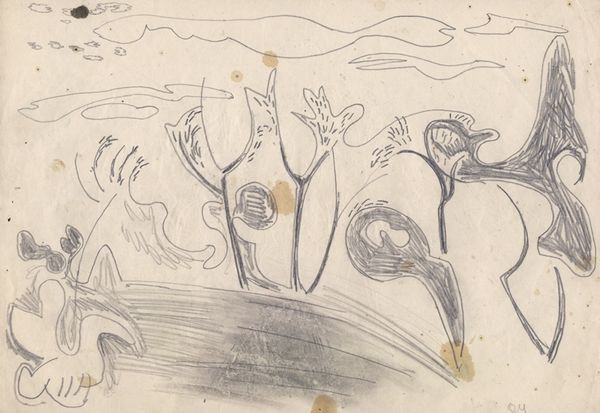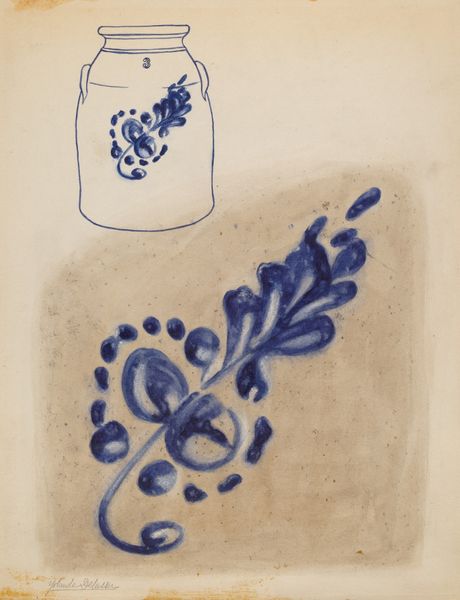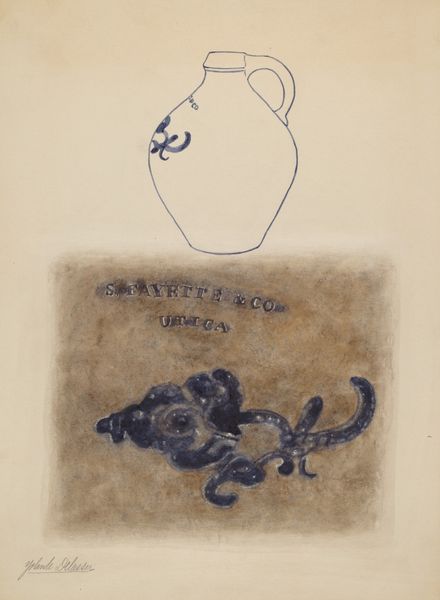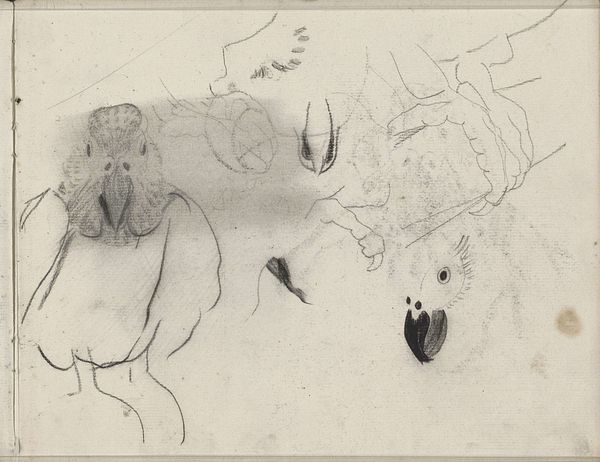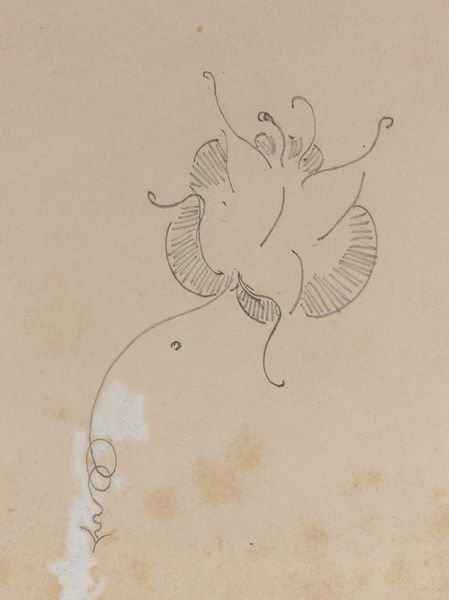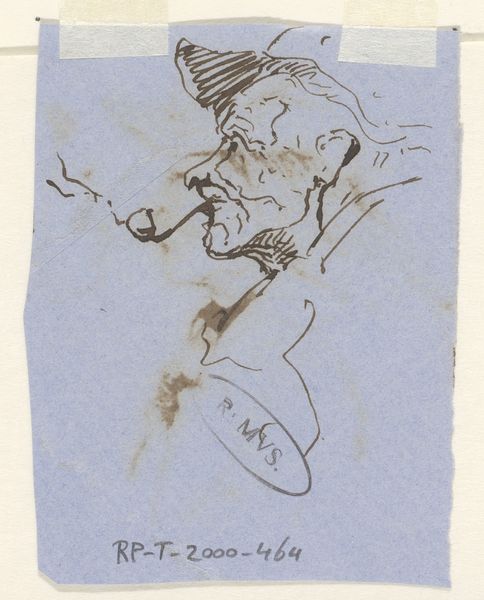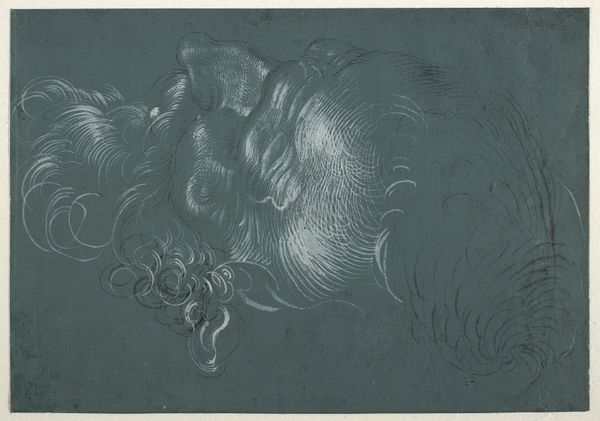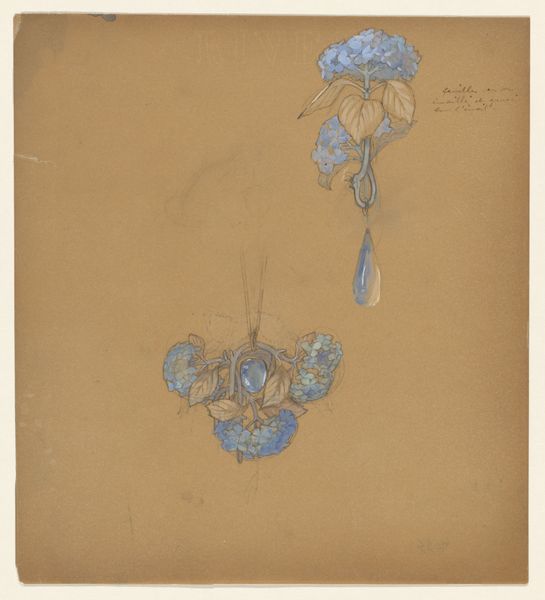
drawing, watercolor, ink
#
drawing
#
blue ink drawing
#
watercolor
#
ink
#
watercolour illustration
#
watercolor
Dimensions: overall: 29.2 x 22.9 cm (11 1/2 x 9 in.) Original IAD Object: 18 1/2" High
Copyright: National Gallery of Art: CC0 1.0
Curator: We're looking at "Jug," a drawing with watercolor and ink on paper by George Loughridge, created around 1937 or 1938. Editor: It’s quiet. Almost spectral. The sepia wash is subdued, with these strikingly vibrant, cool-toned blue line drawings superimposed. The jug itself is off-center and feels more like a ghost than a solid object. Curator: I find it particularly interesting how this piece fits within Loughridge’s larger body of work, which often engages with themes of industrial decline and the commodification of rural life in the mid-20th century. What is evoked in the artist’s careful rendering of something as quotidian as a jug? What assumptions does Loughridge challenge about value, production, and gendered labor? Editor: Well, jugs like this were ubiquitous, so the fact that Loughridge elevates it—places it almost on a pedestal of stylized motifs and inscriptions—suggests something about collective memory. I'm intrigued by the label-like imagery: "J Fisher Lyons NY" and the number 5, all rendered as these bold symbols. Does this recall a specific maker or perhaps the nostalgic packaging of goods in that era? Curator: Precisely. By showcasing this utilitarian object with such deliberate attention, Loughridge arguably critiques the forces shaping consumer culture during this period. Think about the narratives embedded in advertising at the time. Loughridge is subverting and interrogating class relations within his work by elevating a commonly used object in contrast with refined high art, which had long excluded commonplace, domestic subjects. Editor: Absolutely, this contrasts so clearly with those conventions. I can also't help seeing this bloom of swirling lines above, like an uprooted dandelion, as symbolic of dispossession. Are we meant to consider the decline of manual craftsmanship, as perhaps manufacturing took its place? Curator: Indeed. Its visual simplicity underscores broader societal shifts that redefined labor and challenged rural autonomy. Perhaps it's his means to grapple with the disappearance of particular ways of life—that even humble objects are testament to those passing moments. Editor: Ultimately, this is so thought provoking in the ways it asks us to rethink our relationship with everyday items, recognizing the profound symbolism within what we so often overlook. Curator: And prompts us to examine the socio-political dynamics embedded even within the humblest still life compositions.
Comments
No comments
Be the first to comment and join the conversation on the ultimate creative platform.
